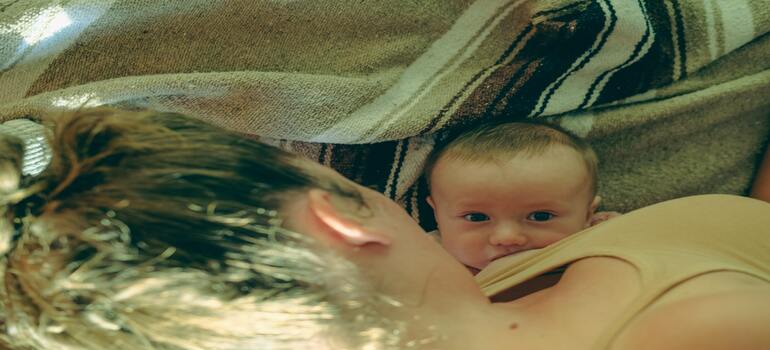Ways to prevent Mother to Child diseases

- April 5, 2021
- MKB Team
The most vulnerable persons who are likely to contract diseases are impoverished women and children. As the old saying goes, healthy and empowered mothers lead to healthy children. The health needs of women and children have become increasingly complex in today’s world. These health needs of women and children demand a thorough, multifaceted approach from awareness to change to solutions to innovation to impact. In a country like ours, this is easier said than done with social and implementation hurdles spread all along the way. These hurdles hinder health measures to be employed effectively.
But undoubtedly, prevention of mother to child diseases is the need of the hour. For this to happen successfully, governments, communities, health workers and families must work hand in glove for the integration, expansion and implementation of the most successful and tried and tested measures. Here are the following ways that can help achieve this and prevent mother to child diseases successfully:
-
Vaccinations
Child and mother vaccination reduces the risks of diseases being contracted by the mother and transmitted to the child, thereby ensuring child morbidity and mortality. Vaccines are the only weapons to fight life-threatening diseases like diarrhoea for example, a silent killer of almost two million children every year in the world. Social change and awareness is a must as it has been noticed that mothers are not inclined to take the vaccines even after its readily available for numerous reasons like fear, lack of transportation, and rigid cultural practices. Often, mothers hailing from rural areas prefer to engage in traditional practices and traditional healers rather than medical aid. Educating and empowering these traditional healers is a great idea and taking their help for vaccinating both mother and child is helpful as the basic goal of mother and child health is the same in both cases.
-
Education
Education is one of the most powerful methods as only through education is awareness possible. Awareness is the key goal and the entire community has to be made aware about the problem with the help of drives and the distribution of health educational material like handbooks for example. Taking the help of the influential people in the local community is advisable as they can sway the decision makers. Regular health drives must be held explaining how diseases like HIV/Aids, Malaria, and Tuberculosis can be contracted by the mother and spread to the child, and how they can be combatted successfully.
-
Mothers to Mothers
This strategy has proved effective in many parts of the world where experienced mothers go and counsel a pregnant mother, telling her what to do and what not to do. This works because there is a bond that’s shared and it’s easier for a woman to confide in a woman. Overcoming the barriers that prevent some women from accessing medical care can also be identified. These Mentor Mothers can also be employed for the following programmes-
- Regular support groups.
- Formal and informal individual counselling.
- Help with issues of stigma and disclosure to family and friends.
- Comprehensive education sessions about diseases, and prevention of mother-to-child transmission.
- Daily gatherings for nutritious lunches and nutrition education.
-
Malaria Strategies
Malaria infection is one of the biggest threats when it comes to mother to child transmission. Pregnant women are twice as likely to get infected with malaria as the women who are not pregnant but living under the same conditions. This is because of the higher level of immunity in the case of non-pregnant women. The ill effects of pregnancy associated Malaria are low birth weight for infants and maternal anaemia. Research has indicated that the best Malaria strategies include increased public education, use of bed nets and preventive treatment like anti-malarial drugs during pregnancy. Government campaigns with a vehicle that travels with a loudspeaker enlightening people about how to avoid malaria, television and radio campaigns, and personalized door to door campaigns also help the cause.
-
Better Medical facilities
It is no secret that the medical facilities of our country need a vast improvement. As most of India is still rural, it is disheartening to see people from the rural areas travelling to bigger towns for minor medical treatment. The healthcare system in the rural areas needs a big boost in terms of approach, equipment and skilled workers. Even in the urban centres, people who cannot afford private healthcare services are denied of good healthcare in the government hospitals. In a developed nation, healthcare is usually free for all its citizens. While this might not be possible in a country as densely populated as ours, the least we can do is provide better medical facilities to curb and eradicate all types of diseases.
Was this article helpful for you? We would love to hear from you. Do write in with your views, suggestions and questions. We would love to answer your queries in our popular Q&A Session, where you ask and we answer!
Q&A
You ask and we answer!
How can a mother lower the risk of infection to the child?
Vandana Menon, Kochi.
- Prevention of Mother to Child Transmission (PMTCT)
- Receive antenatal services and testing during pregnancy.
- Have access to antiretroviral treatment (ART)
- Practice safe childbirth practices and appropriate infant feeding.
- Make use of infant testing and other post-natal healthcare services.
What can be passed from mother to child?
Alka Mohanty, Bhubaneshwar.
Bacteria, viruses, and other organisms are able to be passed from mother to child. The types of infections are
T – toxoplasmosis from Toxoplasma gondii.
O – other infections (see below)
R – rubella.
C – cytomegalovirus.
H – herpes simplex virus-2 or neonatal herpes simplex.
Can disease be transmitted through breast milk?
Suparna Unni, Bangalore.
Yes. Three viruses (CMV, HIV, and HTLV-I) frequently cause infection or disease as a result of breast-milk transmission. Reasonable guidelines have been proposed for when and how to avoid breast milk in the case of maternal infection. It is advisable to consult your doctor or gynaecologist for more details on the same.
Published by
MKB Team
200 Articles
MomsKnowBest is a fast-growing vibrant community of moms, for moms, by moms. Motherhood is complex fun, fulfilling, grueling, exhausting and very complex. There’s no handbook to it. And let’s face it – moms are put...
Read MoreShare with your friends!
Leave a Comment
Trending Post
Myth Buster: Having iron tablets makes your child...
Busting Top 10 Pregnancy Myths about having Iron Tablets
One of the Top 10 pregnancy myths is that...
Health Benefits of Pomelo For Moms To-Be & Kids
During pregnancy, women need proper nutrition to support their health as well as the growth of the...



